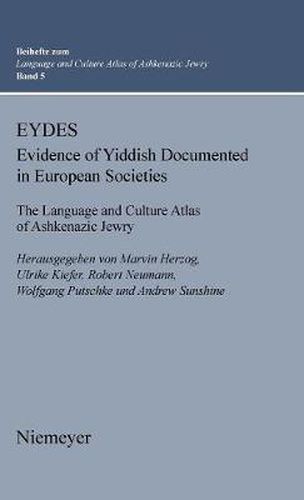Readings Newsletter
Become a Readings Member to make your shopping experience even easier.
Sign in or sign up for free!
You’re not far away from qualifying for FREE standard shipping within Australia
You’ve qualified for FREE standard shipping within Australia
The cart is loading…






This title is printed to order. This book may have been self-published. If so, we cannot guarantee the quality of the content. In the main most books will have gone through the editing process however some may not. We therefore suggest that you be aware of this before ordering this book. If in doubt check either the author or publisher’s details as we are unable to accept any returns unless they are faulty. Please contact us if you have any questions.
At eydes.de, the vast archive of The Language and Culture Atlas of Ashkenazic Jewry, with its 5000 hours of recorded testimony in Yiddish about Ashkenazic society in Europe, can now be accessed and researched via the Internet. In 18 contributions scholars comment on the collection’s research potentials, discuss data and methodology and throw new light on the interactions between Yiddish and coterritorial cultures.
$9.00 standard shipping within Australia
FREE standard shipping within Australia for orders over $100.00
Express & International shipping calculated at checkout
This title is printed to order. This book may have been self-published. If so, we cannot guarantee the quality of the content. In the main most books will have gone through the editing process however some may not. We therefore suggest that you be aware of this before ordering this book. If in doubt check either the author or publisher’s details as we are unable to accept any returns unless they are faulty. Please contact us if you have any questions.
At eydes.de, the vast archive of The Language and Culture Atlas of Ashkenazic Jewry, with its 5000 hours of recorded testimony in Yiddish about Ashkenazic society in Europe, can now be accessed and researched via the Internet. In 18 contributions scholars comment on the collection’s research potentials, discuss data and methodology and throw new light on the interactions between Yiddish and coterritorial cultures.